In the sizzling realm of culinary exploration, where kitchen boundaries blur and flavors dance, the question arises like a gastronomic riddle: Can stainless steel pans go in the oven?
As we traverse the landscapes of cookware compatibility, seeking the perfect vessel to elevate our culinary creations, the resilient allure of stainless steel beckons us into uncharted territories.
Picture a symphony of heat and metal, where the oven becomes a stage, and the stainless steel pan, a versatile performer ready to endure the fiery crescendo of culinary alchemy.
Join us on this culinary escapade as we unravel the secrets of oven-bound stainless steel, forging a connection between kitchen pragmatism and the poetic dance of flavors.
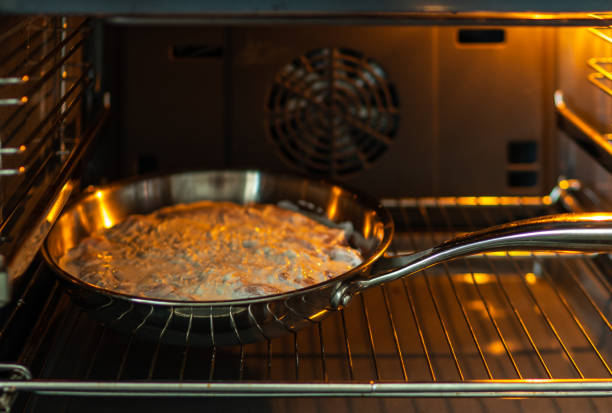
Can Stainless Steel Pans Go In The Oven
Yes, stainless steel pans can safely go in the oven. Their durable construction and heat-resistant properties make them a versatile choice for stovetop-to-oven cooking.
Understanding Stainless Steel Resilience
Stainless steel pans, renowned for their durability and sleek appearance, are a staple in kitchens worldwide. These pans are crafted from an alloy of iron, chromium, and nickel, providing them with exceptional strength and resistance to corrosion.
The unique combination of metals gives stainless steel pans the ability to withstand high temperatures, making them suitable for various cooking methods, including oven use.
Heat Resistance in Stainless Steel
One of the key features that make stainless steel pans oven-safe is their impressive heat resistance. With the ability to endure high temperatures without warping or compromising their structure, these pans can seamlessly transition from the stovetop to the oven.
This heat resilience is particularly advantageous when recipes call for both stovetop searing and oven finishing, offering cooks flexibility and convenience.
Versatility for Various Cooking Techniques
Stainless steel pans have become synonymous with versatility in the kitchen. From searing and sautéing to braising and baking, these pans can handle a spectrum of cooking techniques.
This adaptability makes them an indispensable tool for home cooks and professional chefs alike, allowing for a seamless flow between different stages of a recipe without the need to transfer ingredients to different cookware.
Tips for Optimal Oven Use
While stainless steel pans are oven-safe, there are a few tips to ensure optimal performance. Avoid using pans with plastic or wooden handles in the oven, as these materials may not withstand high temperatures.
Be cautious with non-stick stainless steel pans, as excessive heat can affect the non-stick coating. Always refer to the manufacturer’s guidelines for specific temperature recommendations to prolong the life and functionality of your stainless steel cookware.
Understanding Stainless Steel
Composition and properties
- Composition: Stainless steel is an alloy composed primarily of iron, chromium, nickel, and other elements. The presence of chromium is crucial, forming a protective oxide layer on the surface that prevents corrosion.
- Properties: Stainless steel boasts exceptional corrosion resistance, high durability, and an attractive appearance. Its strength, heat resistance, and hygiene properties make it versatile for various applications.
Popular characteristics
- Corrosion Resistance: Stainless steel’s resistance to rust and corrosion makes it ideal for kitchenware, ensuring longevity and hygiene in cooking utensils and appliances.
- Durability: The robust nature of stainless steel withstands daily wear and tear, providing kitchen tools and cookware with a long lifespan.
- Aesthetic Appeal: The shiny, sleek appearance of stainless steel contributes to the modern and clean aesthetic of kitchen spaces, making it a popular choice for appliances and accessories.
- Heat Resistance: Stainless steel’s ability to withstand high temperatures without warping or deteriorating makes it suitable for cookware, ensuring safe and efficient cooking.
Dispelling misconceptions
- Non-Magnetic Misconception: While some stainless steel types are non-magnetic, others can be magnetic. This misconception arises from the assumption that all stainless steel exhibits the same magnetic behavior.
- Stain-Proof Fallacy: While stainless steel is highly resistant to stains, it is not entirely stain-proof. Harsh conditions or prolonged exposure to certain substances may lead to discoloration or staining.
- Universal Corrosion Immunity: While stainless steel is corrosion-resistant, extreme conditions or prolonged exposure to aggressive substances can compromise its protective layer, leading to corrosion over time.
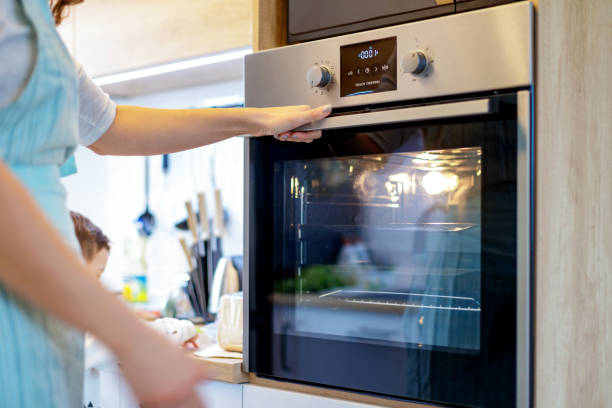
Oven Safety Guidelines
General rules for oven use
- Material Compatibility: Ensure that the cookware is labeled as oven-safe. Materials like stainless steel, cast iron, and certain types of non-stick coatings are often suitable for oven use.
- Handle Safety: Check if the cookware handles are heat-resistant. Oven-safe handles prevent burns when transferring cookware in and out of the oven.
- Avoiding Rapid Temperature Changes: Gradual temperature changes are crucial to prevent thermal shock. Preheat the cookware before placing it in the oven to avoid sudden temperature fluctuations.
- Use Oven Mitts: Always use oven mitts or potholders when handling hot cookware. This includes when removing it from the oven or stovetop.
Temperature Limits for Stainless Steel
- Know the Grade: Different grades of stainless steel have varying temperature tolerances. Generally, stainless steel cookware is safe for use in ovens up to 500°F (260°C). However, it’s essential to check the specific guidelines provided by the manufacturer.
- Avoid High Broil Settings: While stainless steel is heat-resistant, using cookware under a high broil setting for an extended period may exceed its safe temperature limit. Stick to recommended temperatures for optimal safety.
Factors Impacting Safety
- Thickness of the Cookware: Thicker stainless steel pans distribute heat more evenly and are less prone to warping or damage at high temperatures. Choose pans with a sturdy build for better oven safety.
- Handle Material: Ensure that the handles are made of the same heat-resistant stainless steel material. This prevents the risk of handles melting or becoming damaged in the oven.
- Manufacturer Guidelines: Always follow the specific guidelines provided by the manufacturer. Different brands may have varying recommendations for oven use, cleaning, and maintenance.
Factors Influencing Oven Safety
Pan Construction and Design
- Material Thickness: The thickness of the pan material plays a crucial role in determining its ability to withstand high temperatures. Thicker materials tend to distribute heat more evenly, reducing the risk of warping or damage in the oven.
- Base Construction: Pans with a layered or clad base, combining different metals, enhance heat conductivity and provide better temperature control, contributing to overall oven safety.
- Shape and Design: The pan’s design, including its shape and construction, influences how heat is distributed. Well-designed pans promote uniform heating, minimizing hot spots and ensuring safe oven use.
Handles and Their Materials
- Heat-Resistant Materials: Handles made from heat-resistant materials, such as stainless steel or silicone, are crucial for safe oven use. This prevents handles from becoming too hot to touch and reduces the risk of burns when handling hot cookware.
- Secure Attachment: Ensure handles are securely attached to the pan. Loose or poorly attached handles can lead to accidents when transferring cookware in and out of the oven.
- Dual Materials: Some pans feature handles with a different material or coating to dissipate heat faster, making them more comfortable to touch during and after oven use.
Coatings and Finishes
- Non-Stick Coatings: While non-stick coatings can enhance cooking and cleaning, it’s essential to check their oven safety. Some non-stick coatings have temperature limitations, and exceeding these limits may lead to release of harmful fumes.
- Protective Finishes: Stainless steel pans may have protective finishes to resist staining or improve durability. Understanding these finishes and their oven safety limits ensures the longevity of the pan without compromising safety.
- Scratch Resistance: Coatings and finishes should be resistant to scratching, especially when using utensils or cleaning tools. Scratched surfaces may compromise the integrity of the pan and affect its oven safety.
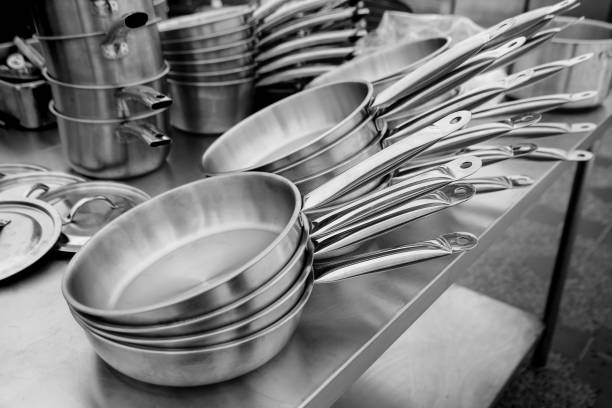
Determining Oven Compatibility
Manufacturer Specifications
- Review User Manual: The manufacturer’s specifications and guidelines provided in the user manual are crucial for determining oven compatibility. These documents often include information on recommended temperatures, safe usage, and any restrictions regarding oven use.
- Check Online Resources: In case the user manual is not available, manufacturers usually provide product information on their official websites. Look for oven compatibility details and any specific instructions related to temperature and usage.
- Contact Customer Support: If uncertainties persist, contacting the manufacturer’s customer support can provide direct and accurate information regarding the oven compatibility of a specific pan.
Reading Pan Labels
- Oven-Safe Labels: Look for explicit labels indicating that the pan is oven-safe. Manufacturers often imprint or affix stickers specifying the maximum temperature the pan can withstand. This ensures you are within safe usage limits.
- Material Information: Pan labels may provide details about the materials used in construction. Understanding these materials can give insights into the pan’s heat resistance and whether it is suitable for oven use.
- Symbol Interpretation: Familiarize yourself with any symbols or markings that convey oven safety information. Common symbols include an oven icon with a temperature limit, helping users quickly assess compatibility.
Assessing Pan Condition
- Check for Damage: Inspect the pan for any signs of damage, such as warping, dents, or loose handles. Damaged pans may not distribute heat evenly and can pose safety risks in the oven.
- Handle Stability: Ensure handles are securely attached and in good condition. Loose or damaged handles can lead to accidents when moving the pan in and out of the oven.
- Cleanliness: Residue or leftover food on the pan can cause smoke or unpleasant odors when exposed to high temperatures in the oven. Clean the pan thoroughly before oven use.
Advantages of Using Stainless Steel Pans in the Oven
Even Heat Distribution
Stainless steel pans excel in providing even heat distribution during oven use. The material’s excellent conductivity ensures that the entire surface of the pan receives consistent heat, reducing the likelihood of hot spots.
This characteristic is especially beneficial for baking and roasting, as it promotes uniform cooking and helps achieve desired textures and flavors in dishes.
Flavors and Nutrients Retention
Stainless steel’s non-reactive nature makes it an ideal choice for preserving the flavors and nutrients of the food being prepared in the oven. Unlike some other materials, stainless steel does not leach or react with acidic or alkaline ingredients, ensuring that the original taste and nutritional value of the dish remain intact.
This makes stainless steel pans particularly suitable for roasting vegetables, meats, and other flavor-rich ingredients.
Durability and Long Lifespan
The durability of stainless steel pans contributes to their long lifespan, making them a wise investment for kitchenware. These pans can withstand high temperatures in the oven without warping or deteriorating, maintaining their structural integrity over time.
Stainless steel resists corrosion and staining, enhancing its longevity and ensuring that the pans remain functional and aesthetically pleasing through numerous cooking cycles.
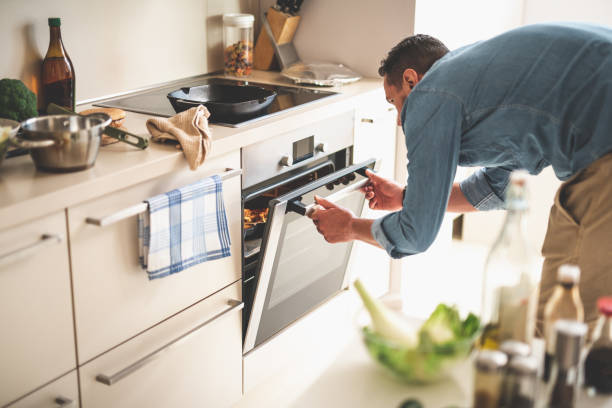
Potential Risks and Precautions
Exceeding Temperatures Risks
- Warped Pans: Exceeding the recommended temperatures for stainless steel pans can lead to warping. Warped pans not only affect cooking performance but also pose safety risks, especially when placed on stovetops or uneven surfaces.
- Coating Damage: Non-stick coatings on some pans may break down or release harmful fumes if exposed to temperatures beyond their specified limits. This can compromise both the coating and the safety of the cooked food.
- Handle Issues: Prolonged exposure to high temperatures can cause handles to become extremely hot. This poses burn risks when handling the pan, particularly if the handles are not heat-resistant.
Precautions For Safe Use
- Adhere to Manufacturer Guidelines: Strictly follow the manufacturer’s guidelines regarding temperature limits and oven use. Exceeding these limits can not only damage the pan but also compromise its safety.
- Avoid Sudden Temperature Changes: Gradual temperature changes are crucial to prevent thermal shock. Preheat the pan before placing it in the oven and avoid transferring it directly from extreme heat to a cold surface.
- Use Oven-Safe Cookware: Ensure that the cookware is labeled as oven-safe. Using pans not designed for oven use may result in damage or safety hazards.
- Monitor Cooking Times: Avoid leaving pans in the oven for extended periods, especially at high temperatures. Regularly check the food to prevent overcooking and potential damage to the pan.
Tips for Safe Use in the Oven
- Use Oven Mitts: Always use oven mitts or potholders when handling hot pans. This includes when removing them from the oven or stovetop to prevent burns.
- Position Pans Carefully: Place pans in the center of the oven to ensure even heat distribution. Avoid overcrowding the oven, as it may lead to uneven cooking and potential damage to the pans.
- Inspect Pan Condition: Regularly inspect the pan for signs of wear, such as warping or loose handles. Replace damaged pans promptly to prevent safety hazards.
Expert Opinions and Recommendations
Insights from Professional Chefs
- Even Heat Distribution: Professional chefs often prefer stainless steel pans for their superior heat distribution. The even heating allows for precise control over cooking temperatures, enabling chefs to achieve consistent and desirable results in their dishes.
- Durability and Versatility: Chefs appreciate the durability of stainless steel pans, as they can withstand the rigors of a professional kitchen. The versatility of stainless steel makes it suitable for a wide range of cooking techniques, from searing and sautéing to baking and roasting.
- Flavor Retention: Stainless steel’s non-reactive nature is valued by chefs for its ability to preserve the true flavors of ingredients without imparting unwanted tastes. This makes it an ideal choice for cooking dishes where the original flavors need to shine through.
Recommendations from Cookware Manufacturers
- Follow Manufacturer Guidelines: Cookware manufacturers emphasize the importance of following their specific guidelines for oven use. Adhering to recommended temperature limits and care instructions ensures the longevity and performance of the stainless steel pans.
- Use Oven-Safe Design: Manufacturers design stainless steel pans with oven safety in mind. Oven-safe handles, appropriate materials, and coatings with specified temperature resistances are common features that contribute to a seamless transition from stovetop to oven.
- Quality Construction: Emphasis is placed on the quality of construction, including the thickness of the material and the overall design. High-quality stainless steel pans are crafted to provide optimal heat distribution, durability, and longevity.
Safety expert tips
- Preheat Responsibly: Kitchen safety experts recommend preheating stainless steel pans gradually. This minimizes the risk of thermal shock, which can lead to warping and damage. Allow the pan to reach the desired temperature gradually before introducing food.
- Regular Maintenance: Experts stress the importance of regular maintenance, including thorough cleaning and inspection of the pan. Keeping the pan in good condition contributes to both safety and performance.
- Handle with Care: Safety experts advise using oven mitts or potholders when handling hot stainless steel pans. Handles can become extremely hot, and proper precautions are essential to prevent burns.
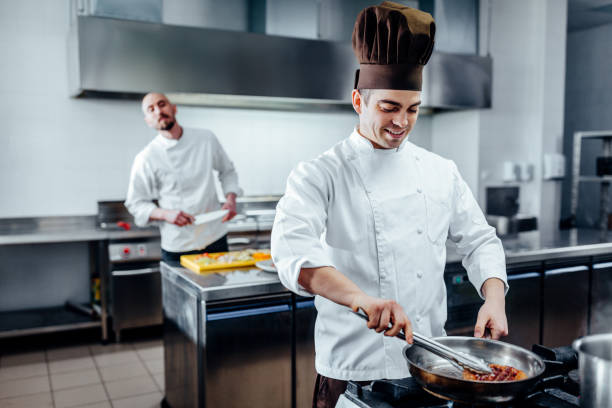
Frequently Asked Questions (FAQs) – Can Stainless Steel Pans Go In The Oven
Q: Can I put my stainless steel pans in the oven?
A: Absolutely! Stainless steel pans are oven-safe, making them incredibly versatile for a wide range of cooking methods. Whether you’re searing on the stovetop or finishing a dish in the oven, your stainless steel pans have got you covered.
Q: What is the maximum temperature at which I can safely use my stainless steel pans in the oven?
A: Stainless steel pans are built to withstand high temperatures, typically up to 500°F (260°C) or even higher. Feel free to explore various oven cooking techniques without worrying about damaging your pans.
Q: Can I use my stainless steel pans for both stovetop and oven cooking?
A: Absolutely! Stainless steel pans are designed for seamless transitions between stovetop and oven. From sautéing and frying to roasting and baking, these versatile pans can handle it all.
Q: Will putting my stainless steel pans in the oven affect their performance or durability?
A: Not at all! Stainless steel pans are renowned for their durability and resilience. Using them in the oven won’t compromise their performance or longevity. Feel free to experiment with different cooking methods with confidence.
Q: Can I use my stainless steel pans in the oven for prolonged periods?
A: Yes, you can! Stainless steel pans are well-suited for extended oven use. Whether slow-cooking, braising, or baking, your pans will maintain their integrity and performance even during longer cooking times.
Q: Are there any specific care instructions for stainless steel pans after using them in the oven?
A: Maintaining your stainless steel pans is a breeze. Simply follow the manufacturer’s care instructions, which often include handwashing, avoiding harsh abrasives, and occasional seasoning. Proper care ensures your pans will continue to excel in both stovetop and oven cooking.
Q: Can I use my stainless steel pans in the oven with metal utensils?
A: Certainly! Stainless steel pans can handle the use of metal utensils without fear of scratching or damage. Enjoy the convenience of using your favorite tools while cooking up a storm in the oven.
Q: Are there any limitations to using stainless steel pans in the oven?
A: Stainless steel pans are incredibly versatile, but it’s always wise to check the manufacturer’s guidelines for specific limitations. Generally, though, you can confidently explore a wide range of oven cooking techniques with your stainless steel pans.
Conclusion
In conclusion, the versatility of stainless steel pans extends beyond stovetop cooking, as they can indeed be safely used in the oven.
This quality makes them a valuable and practical addition to any kitchen, allowing for a seamless transition from searing on the stove to finishing dishes in the oven.
The durability and heat-resistant nature of stainless steel make it a reliable choice for various cooking methods, providing cooks with the flexibility to explore a wide range of culinary techniques.
As with any cookware, it is essential to check the specific manufacturer’s guidelines and ensure that the handles and other components are oven-safe, but overall, stainless steel pans prove to be a reliable and convenient tool for both stovetop and oven cooking.
Other Articles You May Also Like:
- How To Clean Stainless Steel Pans (13 Cool Ways)
- What Is A Nonreactive Pan (7 Eye-Opening Things To Know)
- Can Dutch Oven Go In The Oven (6 Cool Facts To Know)
- Can Non Stick Pans Go In The Oven (7 Cool Facts)
- Substitute For Dutch Oven (8 Cool Facts You Need To know)
- How To Make A Ceramic Pan Non Stick Again (6 Essential Steps)